“Which flowers can I plant for the bees?”
I hear it a lot. You really want to help save the bees. All the pollinators are in decline, and you can help in a significant way with a pollinator garden. You need the right kind of flowers and enough of them, to give them the pollen and nectar they need to live and raise their young.
What’s good for bees is good for all the other pollinators too: butterflies and moths, beetles, hummingbirds, flies, and wasps. But I’ll focus here on flowers for bees because they’re the most important pollinators.
And I’m talking about the native bees—not honeybees. Honeybees were imported from Europe 400 years ago. California has 1,600 species of native bees and they are very effective and vital pollinators. So, when you see bees, try to find the non-honeybees to see what they’re like and get to know them. These are not stinging bees—unless your hand is in their nest or squishing them.
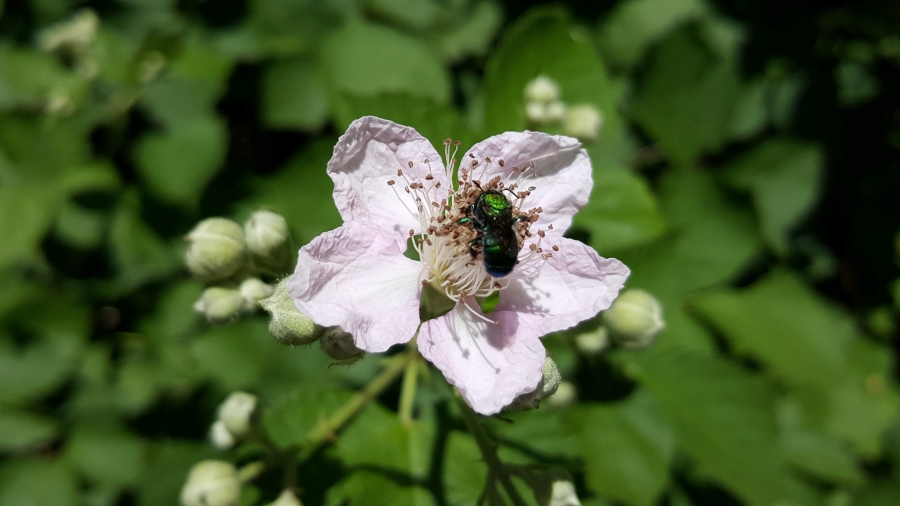
The most important plants they need
The first requirement is to give them a spectrum of native plants.
Native flowers are essential for up to 25% of the bees that are specialist feeders. These specialists evolved at the same time as one, or several, plant species and they depend on those flowers for their pollen and nectar. In turn, those flowers often rely on only those bees for adequate pollination. The specialists emerge from their nests as their flower begins to bloom.
The other bees are generalists and can visit many different flowers.
Pollinators are essential for nearly 90% of all plants, including those in the wild, to form seeds for the next generation of plants. If specialist native bees are needed to keep plant species going, we need those bees.
Bees need diversity in their diet just like we do. Nectars vary in their ingredients, some even contain caffeine, which has been shown to improve bee learning and navigation skill! (Source) Scientists agree that native plants offer the most benefit to pollinators in their nectar and pollen. (Source) Since we know little about most native bees, the best we can do is to choose a variety of native plants to help.
Here in Nevada County, we’re surrounded by many native trees and shrubs; Ponderosa pines, incense cedars, Douglas firs, and all the oaks, each host butterflies and moths. Plus, they provide shelter and resting spots for all pollinators. That’s a start.
Provide enough bloom throughout the season
To truly support the bees, plant flowers for continuous bloom throughout the season. Once bees have found your garden they will come back often and even nest nearby. Satisfy their efforts and keep a steady supply of flowers blooming for them. From very early spring through fall plan to have at least three types of plants blooming at any time.
Try to have abundance for them. The recommendation from the UC Berkeley Urban Bee Lab is for each species of bee plant you have to take up a minimum of three square feet. This can mean one shrub, like ceanothus, or a three-by-three foot patch of Santa Barbara daisies.
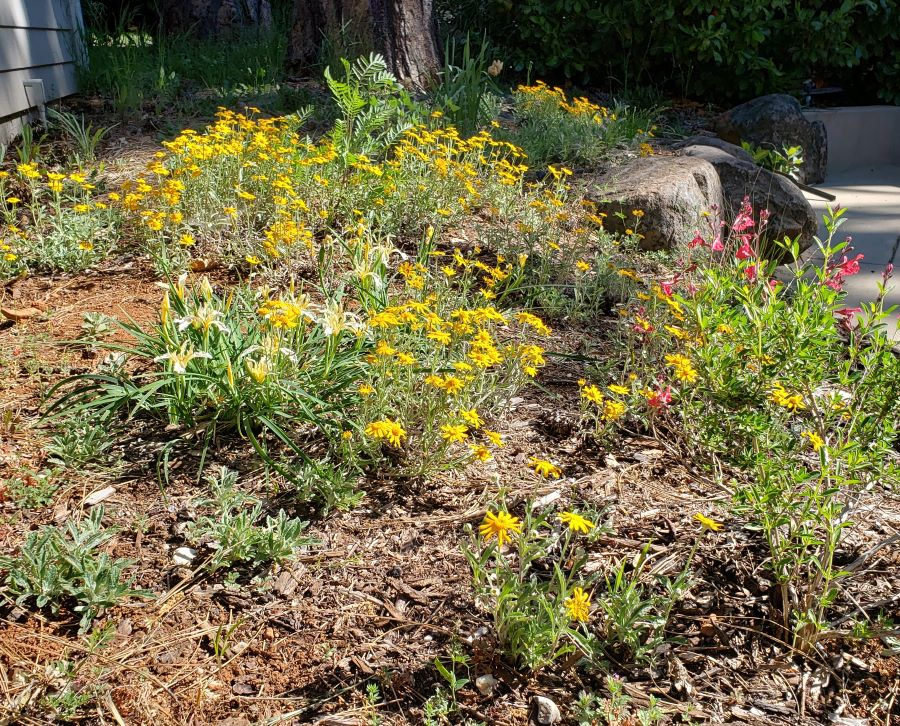
Different types of flowers for different bees
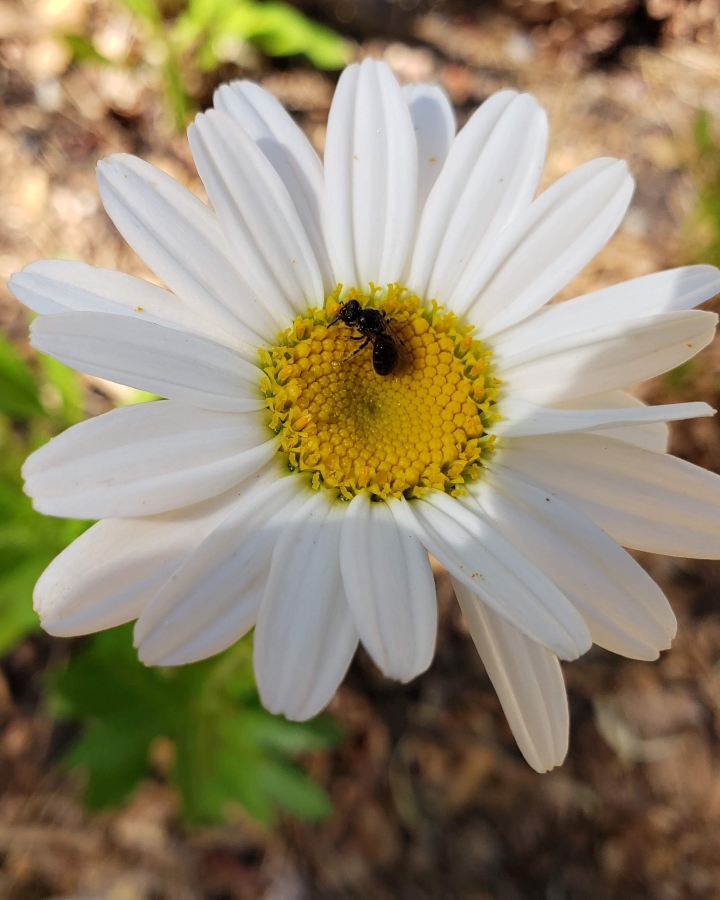
Some bees have short tongues, some have long tongues. The short-tongued bees can only feed from flowers that have easily accessible food. Sunflowers, daisies, and asters are examples of this type. Long-tongued bees can dip into more tubular flowers for their food: plants like penstemon, bee balm, and salvias are good for them.
Try to choose flowers for both short- and long-tongued bees for each bloom time.
Avoid double flowers because it’s difficult or impossible for bees to gain access to the pollen and nectar. Double flowers have ruffled centers with many petals.
How to choose flowering native plants for your garden
We have many beautiful native plants to choose from in Nevada County. It can be daunting to figure out which plants to choose. For native plants, the perfect resource is Calscape.org. It’s a website maintained by the California Native Plant Society, and you can find all the information you need about native plants and what they need. You can even type in your address or your zip code to find the exact plants that are native to your spot, plus nurseries that carry them.
Try to locate your pollinator garden in full sun, which is six hours or more of direct sun.
Create a low maintenance, low water, deer resistant border of native shrubs
A small hedgerow of native shrubs and perennials can provide significant bee food and shelter.
In Nevada County the earliest bloom is often in manzanita. Bumblebees are attracted to these flowers because they’re perfect for buzz pollination, and bumblebees can get out and work in colder weather than all the other bees. Willows host many of our beautiful butterflies and provide an early source of pollen and nectar for bees.
Through the spring there’s redbud, several species of ceanothus that attract so many different bees and other tiny pollinators, Mahonia, native dogwoods, native currants and gooseberries, elderberry, and more.
Later, in the summer toyon provides a much-needed mid-summer bloom for bees, and coffeeberry which attracts bees and all sorts of other pollinators.
Including these plants in your landscape is an easy way to attract pollinators.
Perennial flowers, annual flowers, and wildflowers for bees
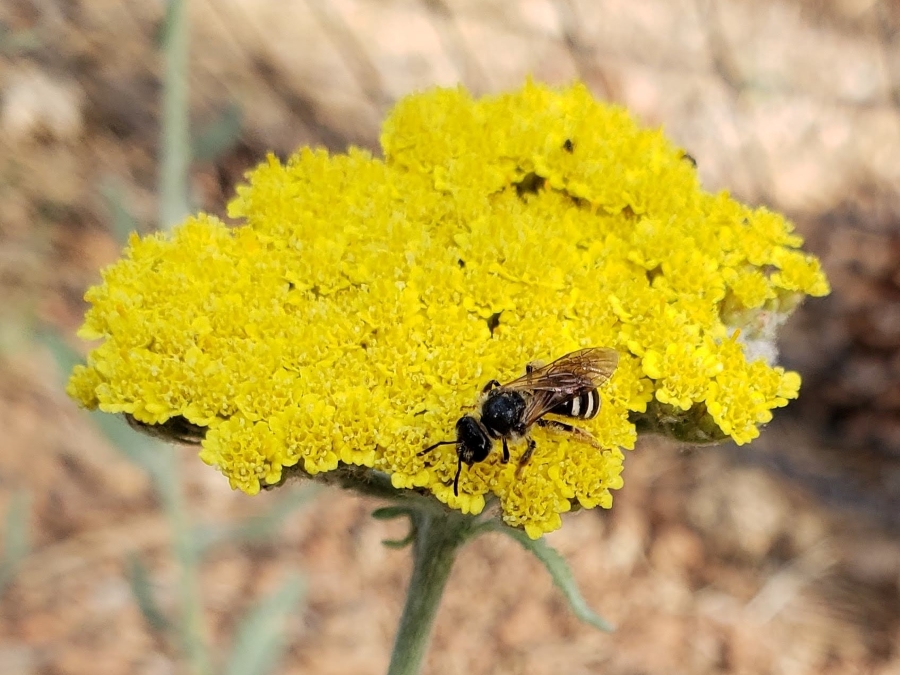
Perennial flowers are fun plants to select and grow. There are so many flowers to choose from, and once planted, they keep coming back and get bigger each year. Choose from both native and non-native species. You can use many of them for cutting flowers, too.
Some nice bee-loving natives for us in Nevada County are California goldenrod, Foothill Penstemon, Coyote Mint, Sonoma Sage, California Fuchsia, California poppies, and lupines. Common Yarrow is great for all pollinators, but it can be invasive in a garden. Substitute with the named garden yarrow varieties for fun colors and better garden behavior.
For non-natives choose Echinacea species, salvias, Shasta daisies, feverfew, bee balm, lavenders, catmint, and more.
Annual flowers for bees include sunflowers, cosmos, celosias, alyssum, zinnias, and more.
The UC Berkeley Urban Bee Lab provides a good list of flowers to choose from for all of California, so be sure to check that it grows here. Find it at UC Berkeley Urban Bee Lab.
Include wildflowers! There are good instructions on how to sow seeds from the UC Davis Arboretum . Local nurseries carry wildflower seed mixes. There are even some specifically for pollinators. Find a sunny spot for a wildflower garden for the pollinators.
Herbs, fruits, and vegetables are good too!
Fruit trees, berries, and herbs feed the bees. Vegetables, too. Once you have a good array of native plants, you’ll have attracted plenty of bees to pollinate your food plants. Herbs like oregano, mint, sages, rosemary, thyme all feed bees. Annuals that go to flower, like dill, cilantro, and parsley, feed many of the tiny bees.
You can see that it’s pretty easy to boost our pollinators with flowering plants. You need season-long bloom, enough of each plant, no doubles, and most of them in natives. The natives will require less water and maintenance than other landscape plants—as a bonus.
If you only have a tiny space, even pots planted with flowering natives will help—it all counts!
See Our Gardens Can Save the Bees—Much More Than You Think! to learn about how significant all our flowers can be in saving the bees.
My next article will help you provide habitat for pollinators so they can be near their food.
Related Reading:
Our Gardens Can Save the Bees—Much More Than You Think! Learn about how we can have a significant impact with the right flowers to save the bees.

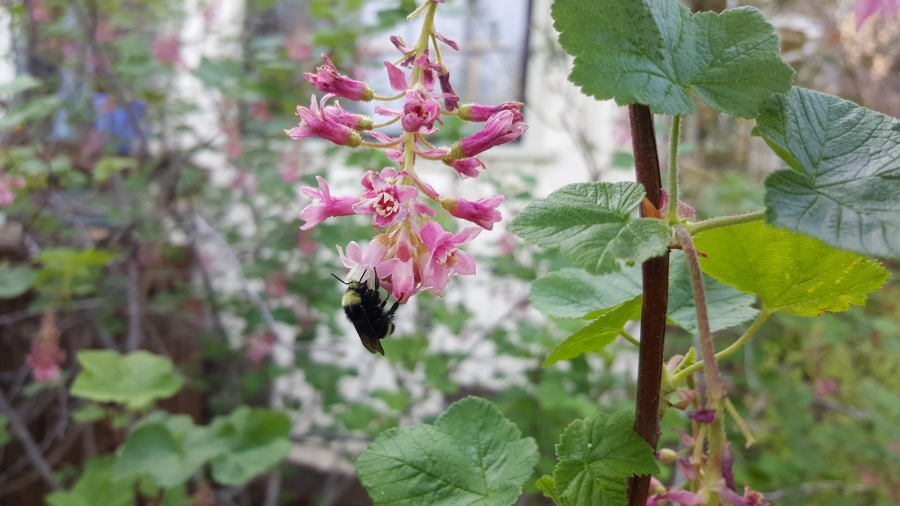
We have a shady yard, with only a few sunny spots. We have planted shade-loving natives like Ribes viburnifolium, Lessingia filaginifolia and polystichum munituim (Woodwardia) and Heuchera micrantha. I am not sure if I have enough of any plant to sustain the native bees. Ponderosa Pines, cedars, dogwoods, oaks and a redwood tree provide the shade. Additional suggestions would be appreciated. Could you address this problem — shade-loving natives, drought tolerant, that would help our native pollinators?
Hi Ann,
It looks like you’re off to a really good start with what you already have. Summer to fall bloom is the hardest to supply for the bees. But there are plants that work. California goldenrod is an excellent one. Calscape says it grows from full sun to full shade, needs low to very low water. (By the way, goldenrod is not the same as ragweed—which is the allergy plant for so many.)
Another is yarrow, said to take full sun to full shade. Both of these plants will spread happily so give them space. I’d give these the most sun for more flowers, and for later in the season.
Larner Seeds has a wildflower blend for sun to part shade.
For shadier spots there are still many other options.
See Calscape for your zip code and in the list of plants native to your spot you’ll also see the options for part shade plants and shade plants.